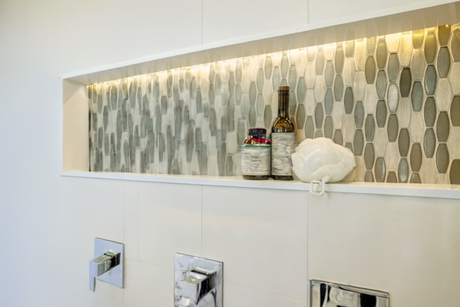Cleaning a toilet may not be glamorous, but it’s an essential part of keeping your bathroom hygienic. After years of professional cleaning experience across Melbourne and Sydney, I’ve found that even tough stains can usually be removed in about 20 minutes with the right approach. If you’ve ever wondered how to clean stains in toilet bowl effectively, this guide will show you simple methods that work. Whether you’re dealing with black rings, rust streaks, or stubborn mineral deposits, the steps here will help you get a clean and fresh result. With a few basic tools and cleaning products, you’ll be able to tackle stains quickly and confidently at home.

Why Toilet Bowl Stains Form and Why You Need to Act Fast
Toilet bowl stains usually come from three main sources: hard water, iron deposits, and bacteria. Hard water with high calcium levels (common in cities like Perth and Adelaide) leaves behind stubborn white mineral rings. Iron in bore water can create reddish-brown rust stains that get harder to remove the longer they sit. Bacterial growth can cause dark spots to appear almost overnight. The longer these stains remain, the deeper they penetrate into the porcelain’s surface. Once they set in, removal becomes much more difficult and sometimes requires professional treatment or even replacement. That’s why learning how to clean stains in toilet bowl early is so important — it prevents permanent damage, saves money on repairs, and keeps your bathroom hygienic.
Essential Tools: What You Need Before You Start
Before tackling stains, make sure you have the right tools on hand. Using proper equipment will make the job quicker, safer, and more effective.
- Toilet brush – Choose a sturdy brush with firm bristles to scrub under the rim and around the bowl.
- Protective gloves – Keep your hands safe from germs and harsh cleaners.
- Measuring cup or scoop – Useful if you’re mixing or applying cleaning solutions.
- Toilet bowl cleaner – Either a commercial cleaner (for heavy mineral deposits) or a natural option such as citric acid.
- Spray bottle – Helps apply solutions evenly, especially for natural mixes.
- Cleaning cloth or sponge – For wiping around hinges, seat attachments, and external surfaces.
How Do You Clean Stains in Toilet Bowl
Step 1: Safety First – Preparing Your Bathroom
Before using any cleaners, make sure the area is safe. Open windows and turn on the exhaust fan for good ventilation. Wear protective gloves and safety glasses, especially when handling acid-based products. Never mix different cleaning products. To prepare the toilet, shut off the water supply and flush twice to lower the water level. If your toilet seat is removable, take it off and soak it separately.
Step 2: Apply Cleaner to Stains
Apply toilet bowl cleaner evenly around the rim, letting gravity spread it down the sides. For stubborn mineral deposits, apply a paste of citric acid and water directly onto the stains and let it sit for 15–30 minutes. Alternatively, a mix of vinegar, baking soda, and a little dish soap can tackle most common stains. Let it fizz for about 20 minutes.
Step 3: Scrub Effectively
Use the right technique instead of just scrubbing harder. For mineral rings, scrub in consistent clockwise strokes; for rust stains, use horizontal and vertical strokes. Always clean from the top (rim) downward to avoid re-contaminating cleaned areas. Hold your toilet brush at about 45 degrees and use a firm “press and twist” motion.
Step 4: Deep Clean and Disinfect
After the first scrub, apply fresh cleaner and give it a second pass. For tough mineral deposits, use a wet pumice stone (safe on white porcelain only) with gentle circular motions. Once stains are gone, apply a disinfectant cleaner for 2–4 minutes to kill bacteria.
Step 5: Rinse and Maintain
Finish by flushing the toilet to rinse away any remaining cleaner. Spend a couple of minutes each week brushing with a mild cleaner to prevent stains. Consider using enzyme-based toilet tablets monthly to reduce organic buildup. If you have hard water, a water softener helps minimise mineral deposits.

Troubleshooting: When Regular Methods Don't Work
For stubborn stains, try the "overnight soak" with straight white vinegar. Pour 2 cups around the rim before bed and let it work for 8 hours. Alternatively, use the "plastic wrap method": apply cleaner, cover with cling wrap to maintain chemical contact, and leave for hours.
When to Call Professional Cleaning Services
If acid cleaners plus pumice stone don't work, consider professional cleaning with rotary equipment or diamond paste compounds. Specialized services save money compared to toilet replacement and achieve impressive results.
Common Mistakes to Avoid
Never use steel wool or scouring pads on porcelain. Avoid bleach if you have a septic system. Patience is key — let cleaning solutions work instead of rushing the process.
Conclusion
Now you know exactly how to clean stains in toilet bowl effectively. Use these techniques and consider our top-rated toilet brushes and cleaning supplies to keep your bathroom hygienic and fresh.

FAQs
Q: How Often Should I Deep Clean My Toilet Bowl to Prevent Stains?
A: A deep clean every 1–2 weeks is enough. Quick daily brushing with a mild cleaner helps reduce larger cleaning sessions.
Q: Can I Use Bleach With Other Toilet Bowl Cleaners?
A: Never mix bleach with other products. Rinse thoroughly if switching products.
Q: What’s the Best Natural Alternative to Commercial Cleaners?
A: White vinegar and baking soda work well. Let the fizz sit 15–30 minutes, then scrub.
Q: Why Do Toilet Bowl Stains Keep Coming Back Quickly?
A: Persistent stains indicate hard water or insufficient cleaning. A water softener and regular maintenance help prevent buildup.
Q: Is It Safe to Use Pumice Stones on All Toilet Bowls?
A: Only on standard white porcelain. Avoid colored, glazed, or coated bowls to prevent scratches.








